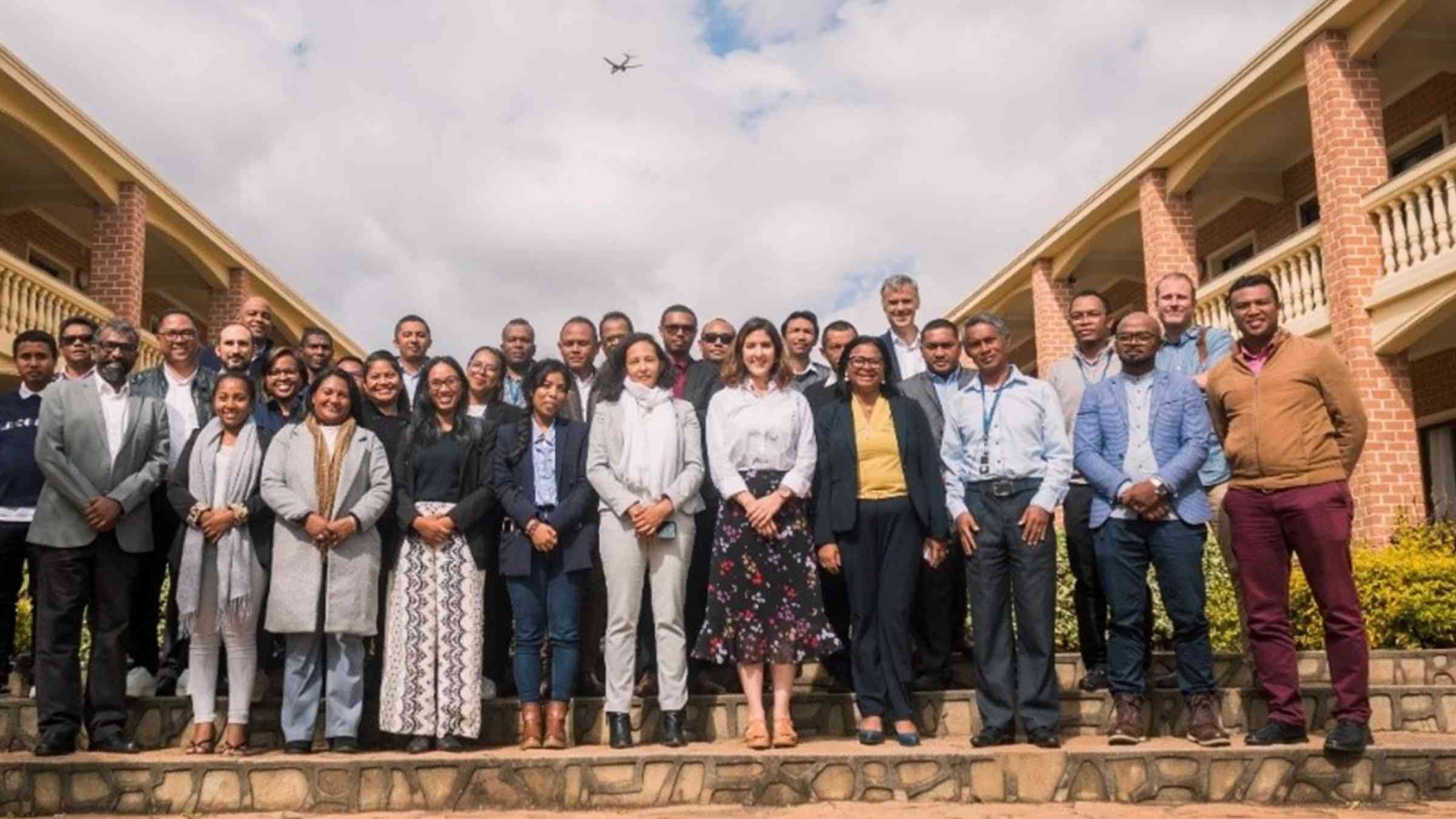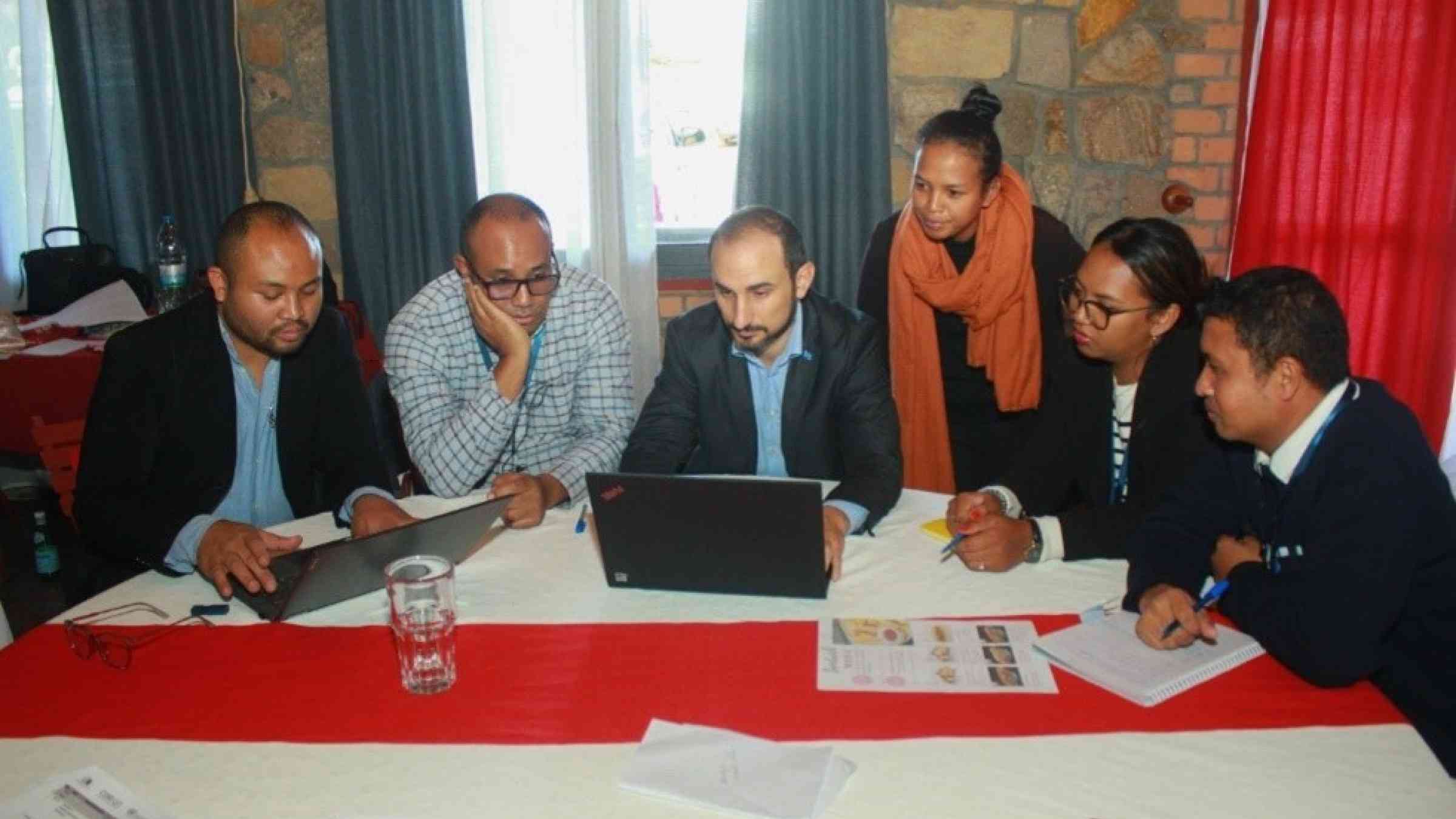From vulnerability to strength: Infrastructure resilience in Madagascar

ANTANANARIVO, MADAGASCAR - In May 2024, the Cellule de Prévention et d'appui à la Gestion des Urgences (CPGU) convened infrastructure stakeholders from the Ministries of Public Works, Transport, Land Management, Water and Energy as well as other key experts in disaster risk reduction to stress test Madagascar's critical infrastructure and evaluate current infrastructure practices.
The workshop was organized in collaboration with the Coalition for Disaster Resilient Infrastructure (CDRI), the United Nations Office for Disaster Risk Reduction (UNDRR), and with the support of the United Nations Satellite Center (UNOSAT). It is part of the broader project "Enhancing resilience of infrastructure through strengthened governance".
This initiative is vital for enhancing Madagascar's national infrastructure resilience policy. It builds on a previous workshop held on 26 March 2024 where preliminary findings from a review of regulations and policies governing key infrastructure sectors in Madagascar were discussed with stakeholders.

In his welcoming speech, the Director of Resilience Promotion, representing the Executive Secretary of the CPGU, highlighted Madagascar's commitment to enhancing infrastructure resilience and underscored the importance and interest in this topic amid disaster risks and climatic hazards in Madagascar.
"Given the crucial role of infrastructure in driving economic growth and improving social conditions-such as transporting goods and merchandise, irrigation for agriculture, and supplying drinking water," he affirmed, "strengthening infrastructure resilience to climate change is a strategic, social, and economic imperative." He emphasized that "strategic support for building sectoral resilience by reducing physical, functional, and structural vulnerabilities is a key mission of the CPGU, which is attached to the Prime Minister's Office,."
The United Nations Resident Coordinator in Madagascar, Issa Sanogo, emphasized that "infrastructure resilience is a key factor in reducing exposure to high levels of vulnerability, since infrastructure is the first line of defense when risks materialize. For this reason, it is necessary to promote cooperation between stakeholders for a more resilient future".
CDRI representative Dr. Umamaheshwaran Rajasekar introduced participants to the GIRI platform, a probabilistic model covering global infrastructure sectors. He provided an overview of its key features, dataset access, and practical applications for informing planning, decision-making, and investment in disaster and climate resilience infrastructure In Madagascar.
Mrs. Marisol López Meda from UNOSAT demonstrated the potential of Geographic Information Technology (GIT) for disaster risk, preparedness, and resilience. She showcased GIS analyses of asset exposure in the transport and energy sectors and satellite-derived damage assessments following the onset of past disaster events in Madagascar.
Visualizing hazard exposure of infrastructure assets in Madagascar helped participants to better understand the importance of data for informed planning and resilience. Representatives praised the data's usefulness in guiding structural calculations and future projects, showing enthusiasm for applying the knowledge gained, including around the UNDRR stress testing approach.
The workshop served not only to improve communication among stakeholders but also to identify asset exposure, understand infrastructure system vulnerabilities, and evaluate current infrastructure resilience practices in alignment with the Principles for Resilient Infrastructure.